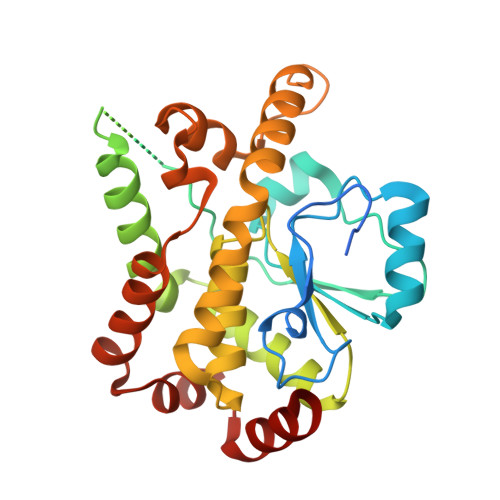Mycobacterium tuberculosis Protein Tyrosine Phosphatase PtpB Structure Reveals a Diverged Fold and a Buried Active Site.
Grundner, C., Ng, H.L., Alber, T.(2005) Structure 13: 1625-1634
- PubMed: 16271885
- DOI: https://doi.org/10.1016/j.str.2005.07.017
- Primary Citation of Related Structures:
1YWF - PubMed Abstract:
Intracellular pathogenic bacteria manipulate host signal transduction pathways to facilitate infection. Mycobacterium tuberculosis protein tyrosine phosphatases (PTPs) PtpA and PtpB are thought to be secreted into host cells and interfere with unidentified signals. To illuminate the mechanisms of regulation and substrate recognition, we determined the 1.7 A resolution crystal structure of PtpB in complex with the product phosphate. The protein adopts a simplified PTP fold, which combines features of the conventional PTPs and dual-specificity phosphatases. PtpB shows two unusual elaborations--a disordered, acidic loop and a flexible, two-helix lid that covers the active site--that are specific to mycobacterial orthologs. Biochemical studies suggest that substrate mimicry in the lid may protect the phosphatase from oxidative inactivation. The insertion and deletion of large structural elements in PtpB suggest that, outside the active site module, the PTP family is under unusual selective pressure that promotes changes in overall structure.
Organizational Affiliation:
Department of Molecular and Cell Biology, University of California, Berkeley, Berkeley, California 94720, USA.















